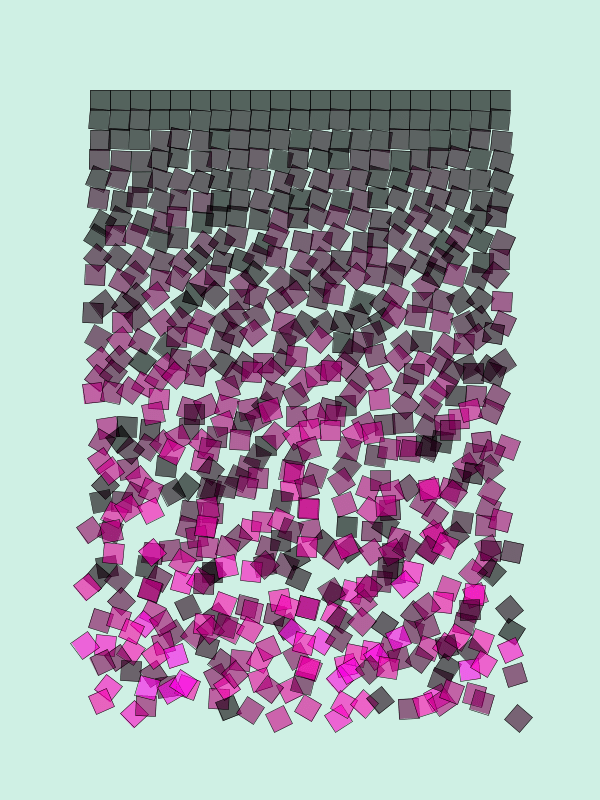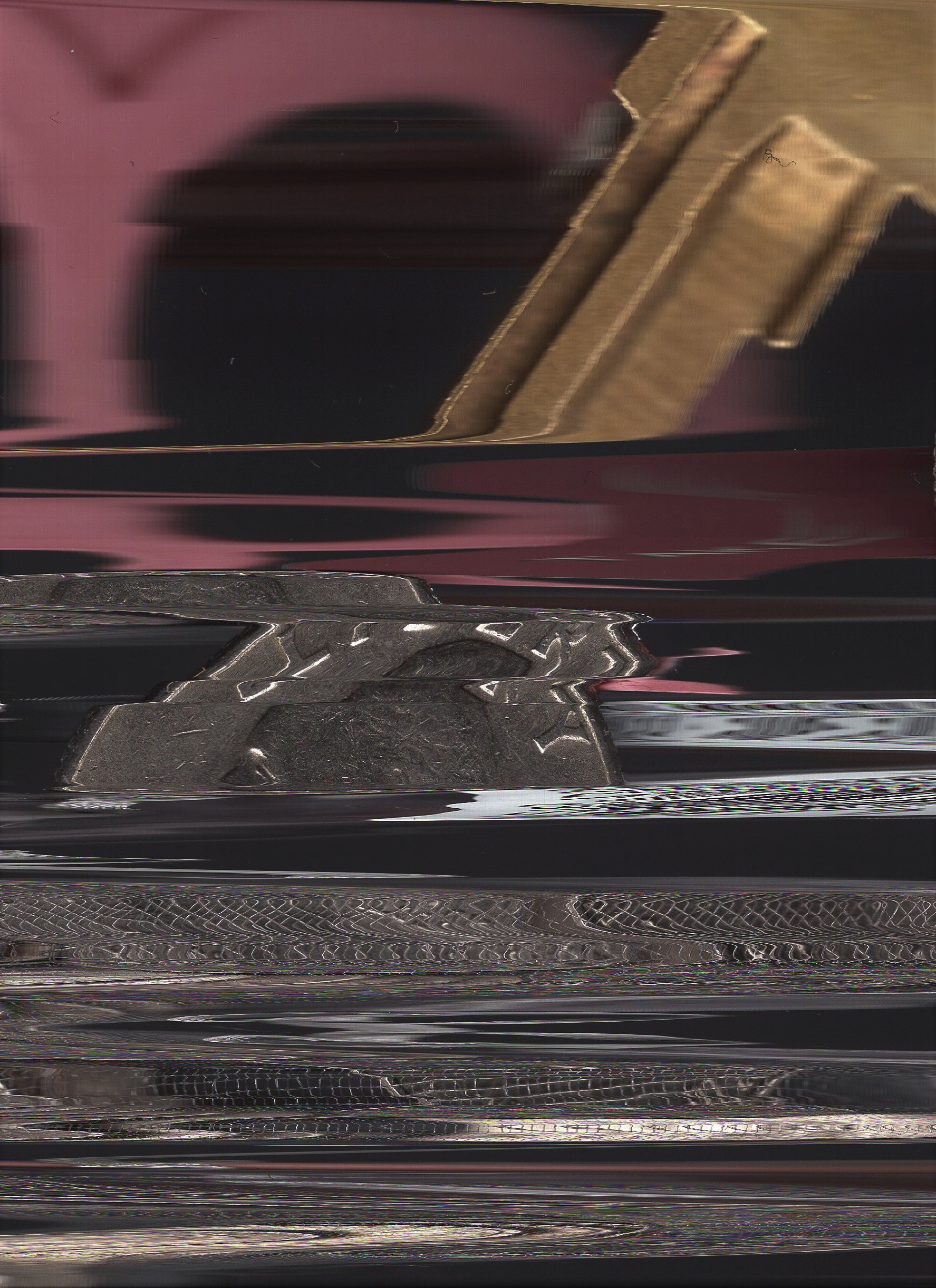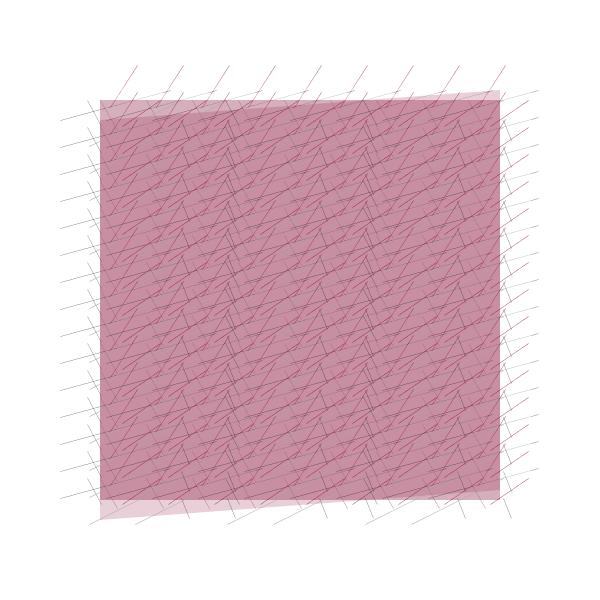Georg Nees, credited as a pioneer of computer-generated artwork, is renowned for his generative, stochastic style of using computers to create works of art. Through his method, Nees would first create a formal structure that was very concrete. By gradually adding more randomness at specific points within the structure, he would then give the computer the power to degrade that structure within the artwork. Although at first not well received by an audience, Nees’s work would become appreciated as a fundamental building block for the vast field that computer and graphic art has developed into today.
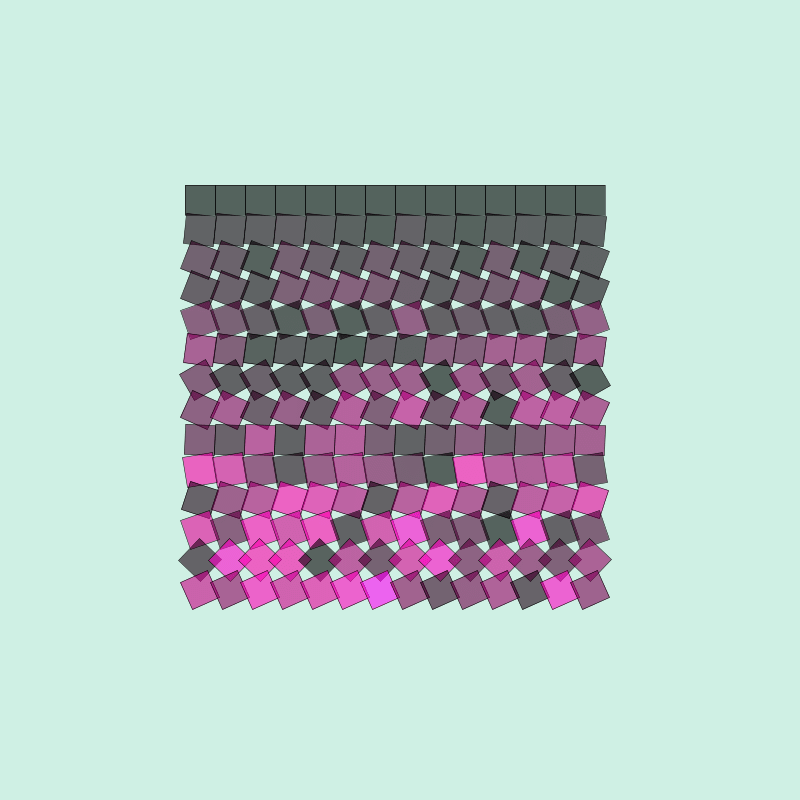
In my first attempt to replicate Nees’s style of work, I began with a uniform grid, as can be observed in Nees’s Gravel (1968) pieces. To do this, I created two nested for loops that generated each of the squares. I then added a rotational variable to the equation that increased the rotation of the squares randomly within a range dependent on the y-value of each of the squares to emulate the signature disruptive effect that was integral to Nees’s pieces. I then added randomness to the fill color of the squares to solidify the contrast between the structure at the top of the sketch and the increasing chaos as the structure devolves.
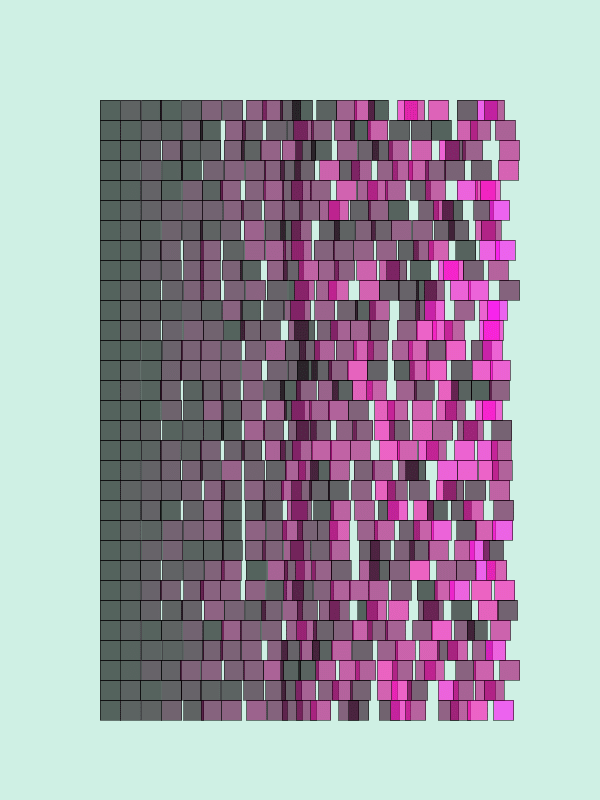
For the second sketch, I wanted to try and approach the format that Nees used in his gravel pieces by altering the values at which the squares get generated- essentially making them jitter when animated. I accidentally added the randomness to the x-values instead of the y-values in this composition, but I think this was ultimately for the best as I was having difficulty getting the squares to move individually when working with y-values because of how the for loops were structured. In addition to the randomness in x-values, I decided to also add the same color randomness from the previous sketch and adjust it to also vary dependent on x-values instead of y-values.
In the final sketch, I attempted to combine the techniques from the first two sketches to emulate Georg Nees’s Gravel compositions. I switched the for loops so that the loop for y-values was nested within the loop for x-values making it possible for me to edit the coordinates of each individual square, making the x- and y-values more random as y increased. I then incorporated randomness into the rotation of the squares which also increased gradually with the y-values of the squares. Finally, I integrated the color randomness seen in both of the first two sketches.
